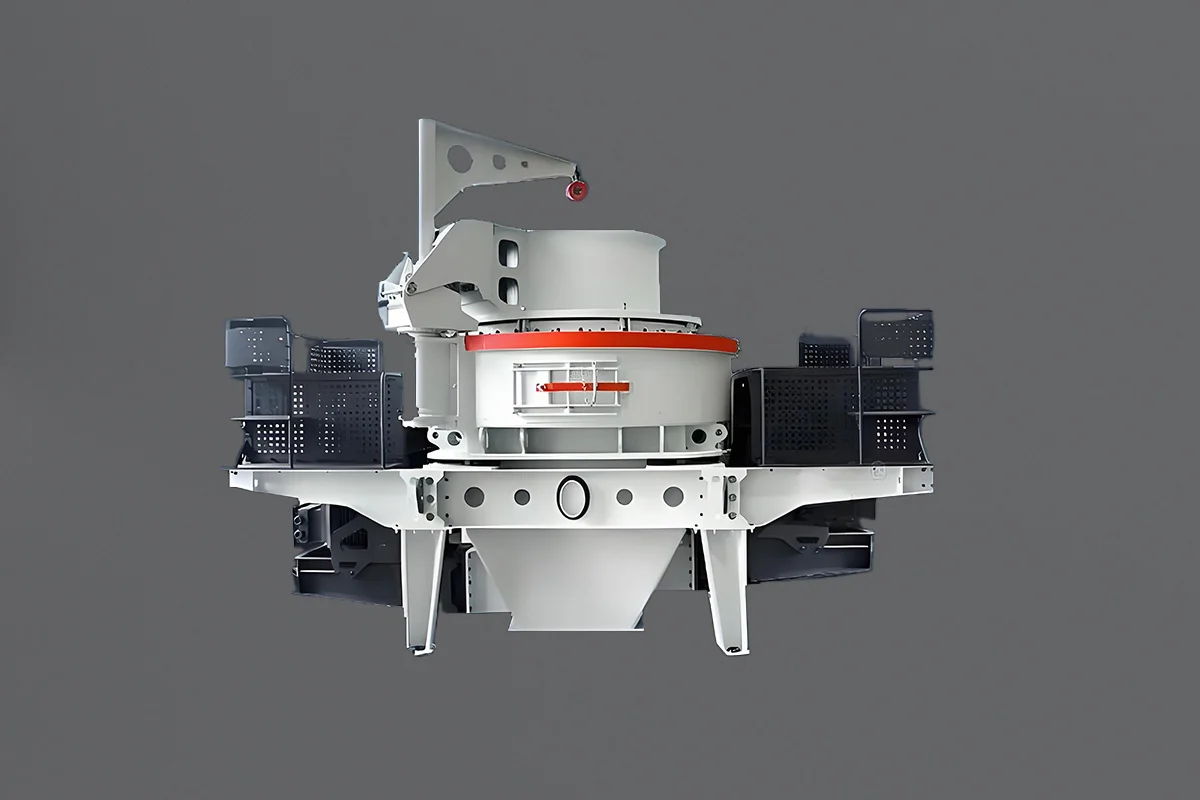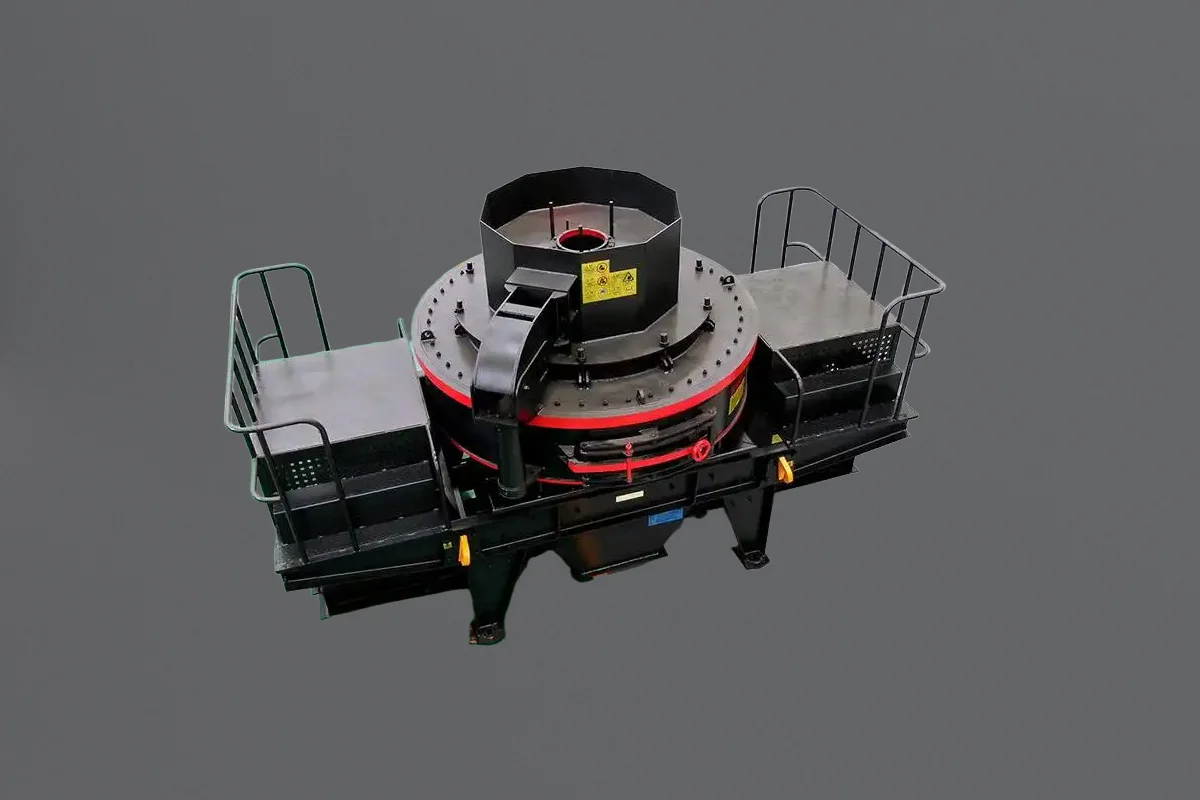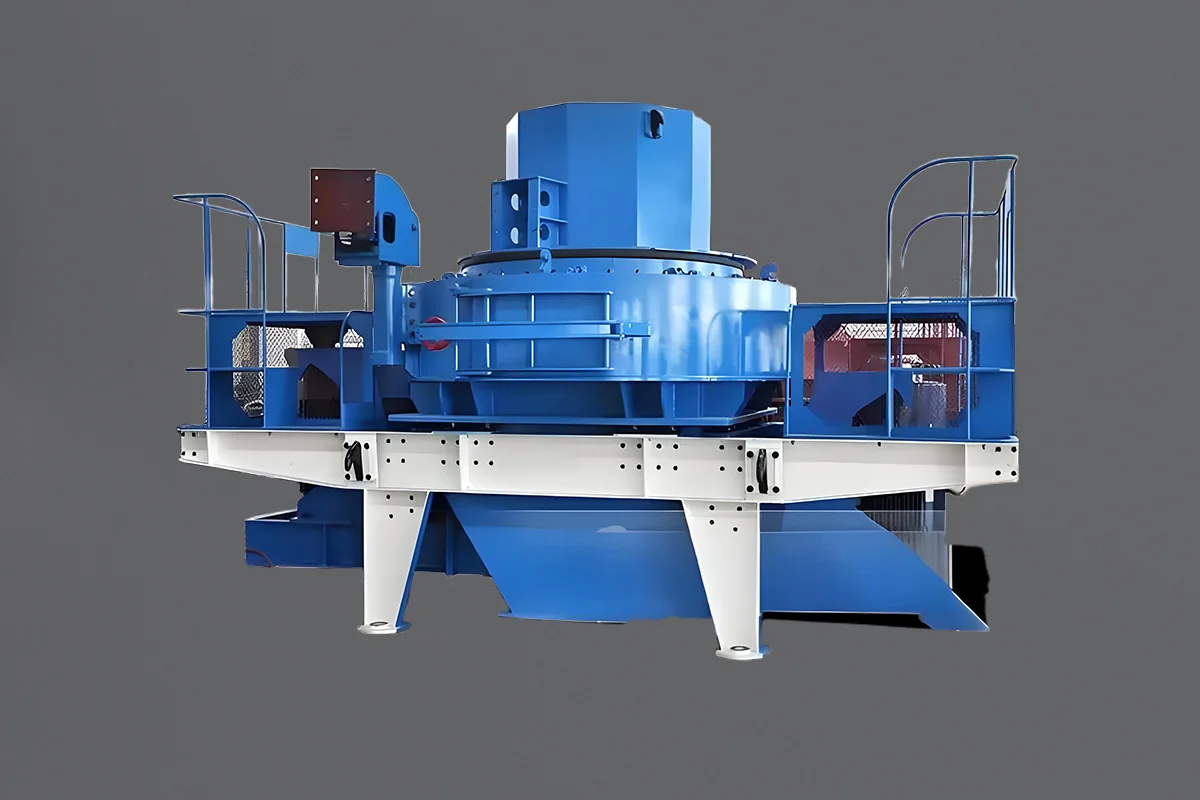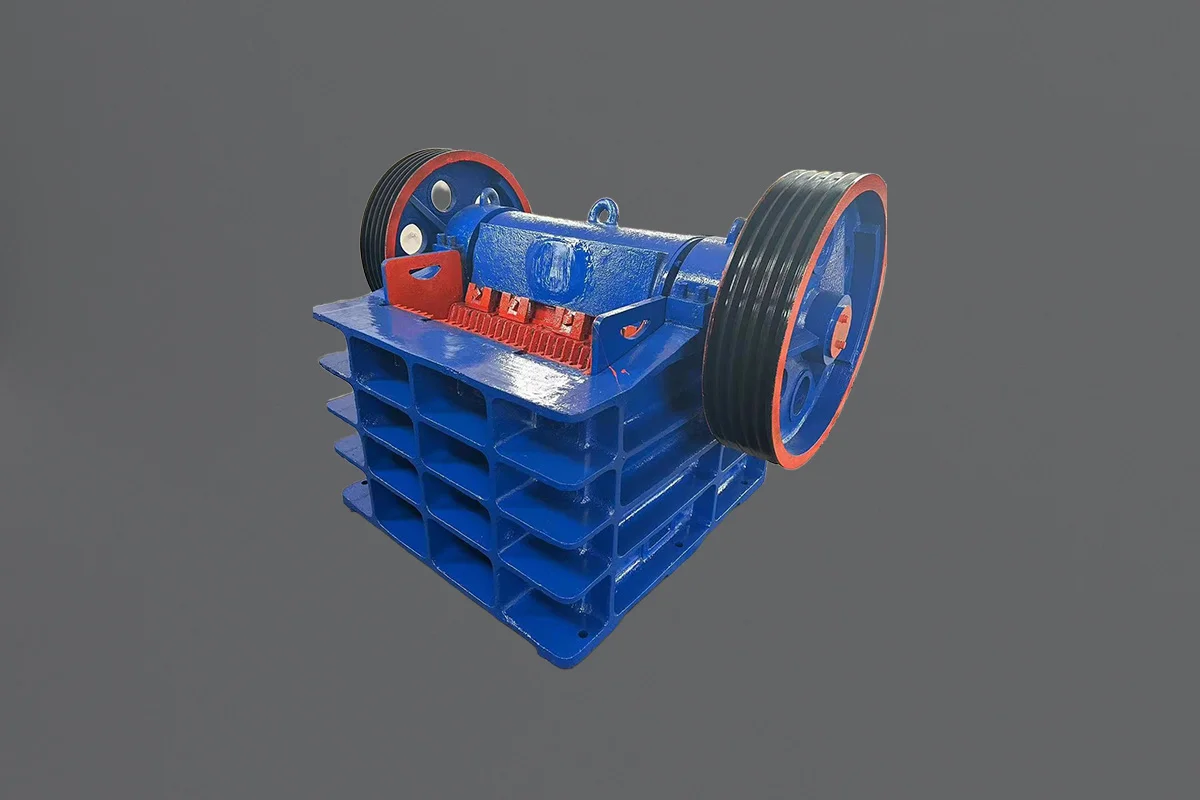After briefly introducing the characteristics of commonly used materials for crusher hammers in terms of types, composition, structure, and performance, this article provides specific explanations of multiple production processes and characteristics of wear-resistant materials for crusher hammers. The selection of wear-resistant materials for crusher hammers should be based on the type of crushed materials and equipment conditions. When the working stress on the hammer is relatively high, materials such as high manganese steel or ultra-high manganese steel should be selected for the hammer, and the production method for the hammer should be integral casting. When the working stress on the hammer is relatively low, alloy steel integral casting or composite casting methods using carbon steel and high-chromium cast iron should be adopted. Undoubtedly, employing composite casting methods to produce crusher hammers is one of the most effective ways to increase their service life.
China Crusher hammer materials
In the Chinese market, crusher hammers of different materials are used in different working conditions.
Alloy steel crusher hammer
When the working conditions of the crusher do not involve a very strong impact, and the advantages of high manganese steel cannot be fully utilized, alloy steel can be chosen to produce hammers to address the issues of low initial hardness, poor work hardening effect, and weak wear resistance of this material. By examining the chemical composition of alloy steel, it is evident that wear-resistant cast steel commonly used for hammers consists of medium to high carbon low-alloy steel and high-alloy steel. The key alloying elements include chromium, nickel, and molybdenum, significantly enhancing the material’s hardenability. Heat treatment can further enhance the strength and toughness of the hammer. Typically, composite structures such as martensite and bainite can be obtained under heat treatment conditions such as air cooling or quenching. Subsequent tempering treatment further strengthens the overall strength and toughness of the hammer material. The entire production process of casting alloy steel hammers is not complex. Initially, they exhibit strong hardness, and after heat treatment, the hardness will be greater than or equal to 46HRC while still retaining strong toughness, effectively meeting the requirements for hammer material usage. Alloy steel hammers are generally used when the crushed material particle size is small and stress is moderate, providing good performance in such conditions.
This material is unequivocally the best choice for producing wear-resistant spare parts that possess exceptional mechanical strength and toughness. These qualities are essential for withstanding a wide array of challenging working conditions. Moreover, it is the most suitable material for crafting main steel structure castings that can endure dynamic loads without any risk of failure.
There are some common alloy steel hammers’ chemical compositions in the China market:
| Grade | Chemical component% | |||||||||
|---|---|---|---|---|---|---|---|---|---|---|
| C | Si | Mn | Cr | Mo | S | P | Ai | |||
| 42CrMo | 0.38-0.43 | 0.15-0.35 | 0.75-1.00 | 0.80-1.10 | 0.15-0.25 | <0.04 | <0.035 | – | ||
| 35CrMo | 0.32~0.40 | 0.17~0.37 | 0.40~0.70 | 0.80~1.10 | 0.15~0.25 | ≤0.035 | ≤0.035 | – | ||
| 38CrMoAl | 0.35~0.42 | 0.20~0.45 | 0.30~0.60 | 1.35~1.65 | 0.15~0.25 | ≤0.04 | ≤0.04 | 0.7~1.1 | ||
| 40Cr | 0.37~0.45 | 0.17~0.37 | 0.5~0.8 | 0.8~1.1 | – | – | – | – | ||
| 30Mn2SiCrMo | 0.25~0.35 | 0.40~0.80 | 1.20~1.60 | 1.35~1.65 | 0.2~0.5 | ≤0.04 | ≤0.04 | – | ||
Qiming Casting has developed special alloy hammers for the metal recycling industry. Check details: 2 – 3 Time Working Life Than Manganese Hammers! No Breaks!! DHT Alloy Hammers for Shredder!
High chromium crusher hammer
High-chromium cast iron focuses on the use of chromium as the alloying element. In some cases, elements such as nickel and molybdenum are added to enhance the hardenability of the material further. Due to the high degree of alloying in high-chromium cast iron, it often exhibits excellent hardenability, hardenability, and wear resistance in the production process of wear-resistant materials such as crusher hammers. In addition, it also possesses excellent oxidation resistance and heat fatigue resistance. In terms of wear resistance, it is significantly superior to cast high manganese steel hammer head materials, making it arguably the best material for producing crusher hammers.
There are some standard chromium steel hammers’ chemical compositions in the China market:
| Grade | Chemical component% | ||||||||
|---|---|---|---|---|---|---|---|---|---|
| C | Si | Mn | Cr | Mo | Ni | Cu | S | P | |
| BTMCr15 | 2.0~3.3 | ≤1.2 | ≤2.0 | 14~18 | ≤3.0 | ≤2.5 | ≤1.2 | ≤0.06 | ≤0.10 |
| BTMCr20 | 2.0~3.3 | ≤1.2 | ≤2.0 | 18~23 | ≤3.0 | ≤2.5 | ≤1.2 | ≤0.06 | ≤0.10 |
| BTMCr26 | 2.0~3.3 | ≤1.2 | ≤2.0 | 23~30 | ≤3.0 | ≤2.5 | ≤2.0 | ≤0.06 | ≤0.10 |
| 1:Allowed to add microscale V, Ti, Nb, B Re, etc. 2:We will choose grade and specific components according to blow bars’ weight , thickness and sizes |
|||||||||
High manganese crusher hammer
High manganese steel primarily consists of austenite and carbides as its casting structure. Due to the presence of carbides, its toughness is not strong, thus requiring water quenching and tempering treatment. After treatment, it will transform into a single-phase austenite structure, possessing very strong impact toughness. However, the initial hardness of the material remains relatively low, and the yield strength is also very low. Microalloyed and alloyed high manganese steel is mainly based on regular high manganese steel, relying on microalloying and alloying to strengthen the matrix further and refine the structure while maintaining excellent toughness during the process of enhancing the initial hardness and yield strength of high manganese steel.
Medium manganese shears mainly weaken the excessive carbon content in high manganese steel appropriately and reduce the solid solution amount of alloying elements in the austenite structure during water quenching treatment to weaken the stability of the austenite structure. Under relatively weak stress conditions, it is easy to work hardened, enhancing its surface hardness and optimizing its wear resistance. After completing the water quenching treatment, high manganese steel’s single-phase austenite structure can undergo significant work hardening under very strong collision stress, thereby significantly strengthening the surface hardness of the entire crusher hammers and optimizing wear resistance.
For crusher hammer materials, the stronger the impact stress they bear, the more prominent their enhancement effects will be, reflecting better wear resistance. After conducting mining trials on high manganese steel wear-resistant materials, it was found that after water quenching treatment, the hardness of high manganese steel reached 220HBW. When used in relatively strong-stress working conditions, its surface hardness can increase to around 550HBW after work hardening, demonstrating excellent wear resistance. However, in environments with less severe stress conditions, the work-hardening effect of high manganese steel hammer heads will be significantly reduced, and the overall wear resistance will be relatively weak, making it difficult to demonstrate the material’s performance fully. Therefore, the stability of the austenite structure of ultra-high manganese steel will be relatively stronger. Typically, under high stress or strain conditions, it can demonstrate excellent work hardening effects and excellent wear resistance.
There are some standard manganese steel hammers’ chemical compositions in the China market:
| Grade | Chemical component% | |||||
|---|---|---|---|---|---|---|
| C | Si | Mn | Cr | S | P | |
| Mn13 | 1.05~1.35 | 0.3~0.9 | 11~14 | – | ≤0.06 | ≤0.04 |
| Mn13Cr2 | 1.05~1.35 | 0.3~0.9 | 11~14 | 1.5~2.5 | ≤0.06 | ≤0.04 |
| Mn17Cr2 | 1.05~1.35 | 0.3~0.9 | 16~19 | 1.5~2.5 | ≤0.06 | ≤0.04 |
| 1:Allowed to add microscale V, Ti, B, Re, etc. 2:We can produce the other high-grade manganese steel hammer according to customers’ requirements. |
||||||
Factors affecting crusher hammer wear
Effect of rotation speed
Properly setting the rotational speed around the crusher hammer can achieve the best collision direction. If the speed is too fast, it will be difficult to feed the material into the radial range of the crusher hammer, and there will be significant damage to the top. When the speed is slow, the material will enter between the crusher hammer, causing noticeable damage to the sides and roots of the crusher hammer. The correct wear location should be at some outer tangent point where the hammer head extends outward.
Influence of the angle between the crusher hammers on the rotating surface
The time it takes for the crusher hammer to rotate from point A to point B, which is approximately 60 degrees, should be equal to or close to the time it takes for the material to enter between the crusher hammers. This ensures that the hammer head collides with the material more frequently, preventing abnormal wear of the crusher hammer. Otherwise, the range and severity of wear on the crusher hammer will further intensify. For example, the crusher used at the Cement Plant has a significant drop (H = 2600mm), with a fast descent rate and a slow rotor rotation rate (209r/min). As the hammerhead is delivered to the operating area and dropped onto the anvil, the hammerhead’s collision efficiency with the material is very slow, resulting in significant wear on the side and root ends of the hammerhead. On the other hand, at the Huaihai Cement Plant, where an imported crusher is used, the overall material drop is not large (H = 1900mm), and the rotor rotation rate is 447r/min. However, the material cannot be delivered to the operating area of the hammerhead, resulting in noticeable wear at the top of the hammerhead and poor overall operational efficiency.
Effect of crusher hammer weight
The reasonable selection of hammer weight not only affects the working efficiency and production performance of the crusher but also significantly impacts the wear of the machine hammer head. The optimal hammer weight should be such that it can efficiently crush the material with one impact, minimizing unnecessary work, preventing the hammer head from tilting backward, and avoiding interference with subsequent hammer blows. The size of the crusher hammer directly depends on the hardness of the crushed material and the energy required for crushing.
Casting method of crusher hammer in the Chinese market
Integral casting method
The integral casting method, or the one-piece casting method, involves melting and casting a hammer material after completing the pattern manufacturing. After successful solidification, the cast hammer head, such as high manganese steel or alloy steel hammer head materials, can be used in this manufacturing method. In the actual manufacturing process, the integral casting method can produce crusher hammers through methods such as multiple pieces in one box or serial casting to accelerate the entire manufacturing efficiency.
Bimetal composite casting method
Liquid-liquid composite casting method
The liquid-to-liquid composite method mainly utilizes integral casting to obtain the desired crusher hammer. Two melting furnaces are started and operated simultaneously to refine two alloy materials during the casting process. Generally, the entire part of the hammer handle adopts ZG270-500 or ZG310-570 cast or alloy steel materials. When the steel composition meets the relevant standards and deoxidation is normal, steel pouring can be carried out during the melting process. After some time, high-chromium cast iron is poured to fill the entire hammerhead and relevant gating system. When using this method to obtain excellent castings, it is necessary to firmly control the pouring temperature and the waiting time after the steel pouring is completed. Specifically, after pouring the hammer handle, wait until the surface of the steel at the handle has a solidified layer with the required thickness before filling it with iron, ensuring that it does not mix with the previously poured steel. It should be noted that in the composite casting of high-chromium cast iron and steel, the first step usually involves pouring steel into the hammer handle area. If iron pouring is directly carried out in the first step, achieving an excellent bonding surface between the steel and iron will be difficult. This may lead to slag entrapment, voids, and other issues within the bonding range of these two materials.
Solid-liquid composite casting method
The solid-to-liquid composite method uses high-chromium cast iron material for the hammerhead portion. At the same time, carbon structural steel or alloy steel is selected for the hammer handle portion. The first step is to complete the manufacturing of the hammer handle portion, followed by specific processing and treatment of the composite area around the hammer handle to ensure that the bonding surface is clean, free of impurities, oxidation-free and that the hammer handle portion to be compounded is transformed into a variable or irregular cross-section through casting or machining to enhance the fusion strength performance of the entire composite surface and avoid detachment during the use of the hammerhead. During the casting process, the first step is to place the processed or treated hammer handle into the sand mold and then pour high-chromium cast iron into the hammer head portion. To ensure better fusion of the composite surface, the hammer handle portion typically needs to undergo preheating treatment before formal pouring. This can be achieved through heating preheating or induction preheating inside the mold. This solid-liquid composite method involves using high-manganese steel to cast the entire hammerhead, with the addition of some hard alloy or high-chromium cast iron blocks at the hammer end where it strikes the material, thereby enhancing the service life of the entire hammerhead.
SHS wear-resistant alloy method
In simple terms, the self-propagating high-temperature synthesis (SHS) method synthesizes materials through strong chemical reaction heat and self-conduction between reactants. Once the reactants are ignited, they automatically spread in the direction where there is no reaction until they all react completely, which is one of the new technological means for producing high-hardness, wear-resistant materials. This method has many characteristics, such as fast reaction, comprehensive reaction, and high energy efficiency. In the casting process, this method is applied reasonably to synthesize high-hardness compounds in areas where wear resistance is required to meet the requirements for wear resistance. In the self-propagating synthesis of CrB2, elemental B or Cr can be used as raw materials, and their oxides can also be used as raw materials. By relying on powder mixing and pressing into specific shapes, these powders are added to the wear-resistant areas during casting. Utilizing the heat generated by pouring the molten metal, these powders can undergo a self-propagating reaction, thereby synthesizing compounds with strong hardness in the areas requiring wear resistance, thus enhancing the wear resistance performance of the entire crusher hammer.
Surfacing wear-resistant alloy method
Overlay welding with wear-resistant alloys involves using hard alloy materials to strengthen the hardness of specific areas of a single high-toughness material hammerhead, thereby enhancing the wear resistance of the entire material. This method is primarily used for repairing alloy steel hammer heads and other components. For example, optimizing D618 welding rods for overlay welding around ZG35SiMn hammerheads can significantly extend their service life. Overlay welding utilizes alloy elements such as chromium in the welding rod to produce a high-carbon, high-hardness martensitic matrix, compound, and other structures, achieving wear resistance. In the repair process of high-manganese steel hammerheads, the “base metal + intermediate transition layer + wear-resistant layer” method can be selected, which aligns with overlay welding. In the overlay welding process, materials like H1Cr21Nil0Mn6 are used to construct the intermediate layer, while D227 welding rods are used to construct the wear-resistant layer, ensuring perfect integration between the base metal, intermediate layer, and wear-resistant layer, thereby increasing the service life of the repaired hammerhead by 2-3 times.
Cast infiltration method
The infiltration method can also enhance the wear resistance of the entire crusher hammers. It is a surface metallurgy method used to manufacture alloy steel hammers. During the casting process, high-carbon, high-chromium, and vanadium iron alloy powders are applied to the outer layer of the casting, and then the molten steel is poured onto it. In the solidification stage of the hammer, the heat is fully utilized to melt the iron alloy powder on the surface, which then tightly fuses with the base metal, forming an alloy layer on the surface of the casting with the required thickness. This layer contains various alloy compounds, enhancing the material’s hardness and optimizing its wear resistance. This method is completed in one step during solidification, demonstrating a significant advantage in simplicity compared to other methods. However, it also has a disadvantage: the thickness of the surface metallurgical layer may be affected by solidification, resulting in the final composite layer not achieving the desired depth.
Summarize
In general, the selection of crusher hammers should be based on the type of crushed materials and the equipment conditions to choose the appropriate casting materials. High manganese steel or ultra-high manganese steel should be selected as hammerhead materials as much as possible for materials with large particle sizes or high hardness. When the working stress of the hammerhead is relatively weak, or the particle size of the crushed material is small, alloy steel integral casting or composite hammerheads made of carbon steel and high-chromium cast iron should be used to strengthen the service life of the hammerhead. Composite casting methods to produce hammerheads can effectively enhance the service life of the entire hammerhead. In manufacturing, liquid-liquid or solid-liquid composite hammerheads can be selected according to manufacturing conditions. For the handle part, carbon or low-alloy steel can be chosen for production, while high-chromium cast iron materials should be used for the crushing part. Composite casting methods can be considered an important way to enhance the service life of crusher hammers. In hammer casting, techniques such as multi-piece box casting or string casting can be chosen to accelerate the entire manufacturing process. Additionally, appropriate heat treatment processes for the hammer heads should be adopted to enhance the wear resistance of the materials fully.



